When Milton Levine returned from World War II, he had some very common, but very pressing, problems.
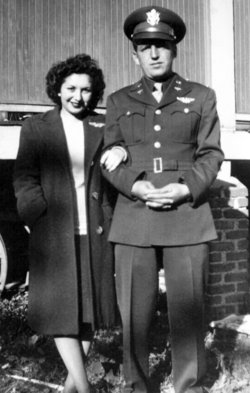 First, he didn’t have much money. That was doubly urgent because he brought a lovely young war bride from France with him.
First, he didn’t have much money. That was doubly urgent because he brought a lovely young war bride from France with him.
Second, he didn’t have a job. With 15+ million service members returning to civilian ranks at the same time, and with the economy shifting from wartime back to peacetime footing, there just weren’t enough jobs to go around. Plus, he had led a platoon that built combat bridges in Europe; that skill set wasn’t in high demand Stateside.
So rather than waste time searching for a non-existent position, Milton decided to go into business for himself. Which presented another problem: just what should that business be? He read in The Kiplinger Letter, a weekly publication forecasting business trends, that the best fields for returning ex-GIs were toys or bobby pins.
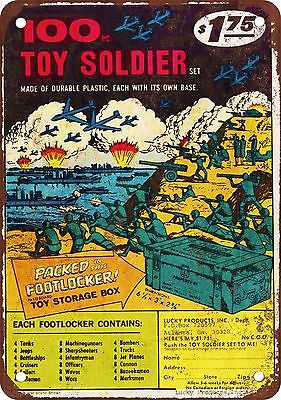 I’m not sure how bobby pins turned out, but the toys part was a home run suggestion. Millions of veterans were marrying and starting families. Overnight, America had a Baby Boom on its hands. And as they grew, those kids wanted toys.
I’m not sure how bobby pins turned out, but the toys part was a home run suggestion. Millions of veterans were marrying and starting families. Overnight, America had a Baby Boom on its hands. And as they grew, those kids wanted toys.
Milton made the right call. He partnered with his brother-in-law and started a small mail-order plastic toy business. It took time, but they learned the ropes and gradually made a go of it. They placed ads in almost every comic book of the era, offering “100 Toy Soldiers for $1” (eventually creeping up to $1.75). They sold imitation shrunken heads to hang on rearview mirrors. (Some could still be seen when I was kid in the 60s.)
 And they also sold the Spud Gun. What on earth, you ask, was that? Just what it sounded like. You stuck the gun barrel into a raw potato, then fired the chunk as a projectile. (This was the time before lawyers filed lawsuits at the drop of a hat, remember.) It turned out there was a post-war potato glut, and the partners sold two million of the plastic toys in just six months.
And they also sold the Spud Gun. What on earth, you ask, was that? Just what it sounded like. You stuck the gun barrel into a raw potato, then fired the chunk as a projectile. (This was the time before lawyers filed lawsuits at the drop of a hat, remember.) It turned out there was a post-war potato glut, and the partners sold two million of the plastic toys in just six months.
So Milton and his brother-in-law were doing ok. They weren’t getting rich, but they were paying the bills.
And then a pool party changed everything.
Inspiration often strikes at the most unlikely times. This was one of them. Because when Milton’s sister decided to host a 4th of July picnic beside the swimming pool at her southern California home in 1956, she had no way of knowing it would lead to a revolution in the toy industry.
The families were relaxing poolside. The kids were playing games. Milton happened to notice a mound of ants, and bent over to watch them. He remembered visiting his uncle’s farm in Pennsylvania when he was a boy, where he dug up ant colonies, put them in Mason jars and watched in fascination as they built tunnels and crawled through them.
Then it hit him: why not build an ant observation toy? And with that, his small business suddenly had a new product unlike anything else on the market. Milton was doodling ideas on a notepad by the time the fireworks started.
Many questions had to be answered. Making Spud Guns was one thing. But ants are living creatures, and living things tend to have a very short shelf life.
Milton and his brother-in-law quickly realized buying the Ant Farm would be a two-step process. They designed a six-by-nine inch plastic display. It included a coupon for 25-30 ants, which would then be sent directly to the buyer. They also discovered they had to obtain permission from each state to send ants via mail. (Hawaii still bans shipping them as an “infestation menace,” by the way.) The next problem: where do you get ants?
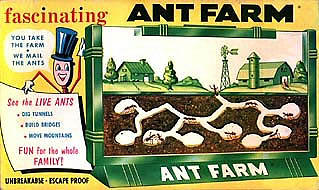 The answer turned out to be surprisingly simple. They took out ads in local newspapers saying, “Ants Wanted!” and offering a penny per. Soon Milton was deluged by people holding jars filled with the insects. One guy showed up with an enormous container and demanded $50. When Milton asked how he knew there were 5,000 ants inside, he dumped them on Milton’s desk, shouted “You count them!” and stomped out.
The answer turned out to be surprisingly simple. They took out ads in local newspapers saying, “Ants Wanted!” and offering a penny per. Soon Milton was deluged by people holding jars filled with the insects. One guy showed up with an enormous container and demanded $50. When Milton asked how he knew there were 5,000 ants inside, he dumped them on Milton’s desk, shouted “You count them!” and stomped out.
Despite the startup headaches, the Ant Farm eventually went on sale for $1.98. And Baby Boomers went crazy for it. Turns out kids really do like watching ants. A lot. Parents and teachers gave it their blessing for being “educational.”
 And the fad hit right in time for the Golden Age of 1950s Television. Milton and his brother-in-law took full advantage of the new medium. They showed the Ant Farm on Merv Griffin’s and Johnny Carson’s shows, made a fancy Executive Ant Farm for American Bandstand’s Dick Clark, and explained ants’ daily routine to Shari Lewis and her popular puppet Lamb Chop. Milton’s son got in on the act; his dad booked him on after school children’s TV shows to hawk the family product. They even built a 12-foot Plexiglas-walled Ant Farm for the 1964 New York World`s Fair and a walk-through version for the 1962 World`s Fair in Seattle.
And the fad hit right in time for the Golden Age of 1950s Television. Milton and his brother-in-law took full advantage of the new medium. They showed the Ant Farm on Merv Griffin’s and Johnny Carson’s shows, made a fancy Executive Ant Farm for American Bandstand’s Dick Clark, and explained ants’ daily routine to Shari Lewis and her popular puppet Lamb Chop. Milton’s son got in on the act; his dad booked him on after school children’s TV shows to hawk the family product. They even built a 12-foot Plexiglas-walled Ant Farm for the 1964 New York World`s Fair and a walk-through version for the 1962 World`s Fair in Seattle.
Sales were so brisk, Milton was buying one million ants every week just to keep up with the demand. Now here’s the amazing part: this toy fad never died out. It just kept going and going, like a retail version of the Energizer Bunny. As Milton himself said in 1991, “Most novelties, if they last one season, it’s a lot. If they last two seasons, it’s a phenomenon. To last 35 years is unheard of.” (And he said that 24 years ago, remember.)
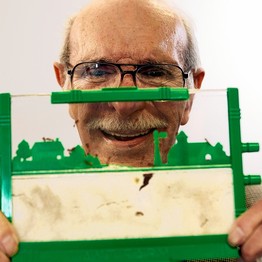 Milton also said, “I found out ants’ most amazing feat. They put three kids through college.” That’s because those tiny ants and those plastic Ant Farms made Milton Levine a very rich man. He bought out his brother-in-law in 1965 and changed the company’s name to what you know today: Uncle Milton’s Industries, featuring Uncle Milton’s Ant Farm. For years he heard the tired old joke, “If you’ve got all these ants, where’s the uncle?” So he gave that title to himself.
Milton also said, “I found out ants’ most amazing feat. They put three kids through college.” That’s because those tiny ants and those plastic Ant Farms made Milton Levine a very rich man. He bought out his brother-in-law in 1965 and changed the company’s name to what you know today: Uncle Milton’s Industries, featuring Uncle Milton’s Ant Farm. For years he heard the tired old joke, “If you’ve got all these ants, where’s the uncle?” So he gave that title to himself.
By the time Uncle Milton sold his company in 1997 (reports said he got as much as $40 million for it), more than 20 million Ant Farms had been sold. And they’re still selling about 30,000 every month, too.
Uncle Milton died in 2011 at the ripe old age of 97. World War II veteran, loving family man, self-made millionaire … I challenge you to show me a better example of the American Success Story.
 With a big dream, a little luck …and a billion or two ants… you could strike it rich one day, too.
With a big dream, a little luck …and a billion or two ants… you could strike it rich one day, too.
Did you find this enjoyable or helpful? Please continue to join me each week, and I invite you to read Tell it Like Tupper and share your review!
Curious about Tell It Like Tupper? Here’s a chance to see for yourself. Take a sneak peek at a couple chapters in this free downloadable excerpt.

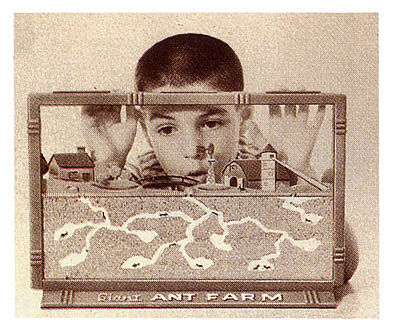
Great story!!
Glad you enjoyed it, Jill.
Hello. There were a few facts in this story even I didn’t know! I was married to Milton Levine’s nephew who was pictured on the first Ant Farm box. Uncle Milton was such a nice guy as is his widow Aunt Maurisette. One mistake Uncle Milton made – he turned down the Hula Hoop! Yes, he was my Uncle Milton too.
What wonderful memories of a wonderful man. Thanks so much for sharing!